In-Depth Comparative Assessment of Different Metallic Biomaterials in Simulated Body Fluid
Abstract
:1. Introduction
2. Materials and Methods
2.1. Method for Preparing the SBF
2.2. Sample Characterization
- 1.
- ICP-OES characterization was performed on the samples in order to determine their exact metallic composition. ICP-OES is a specifically dedicated analytical method for determining large concentrations of metallic components within a given liquid sample;
- 2.
- Optical microscopy (OM) has been used to analyze the surface of the metallic biomaterials in order to highlight corrosion types (pitting, spotting, etc.). Thus, for surface modifications assessment, Axio Vert.A1 Mat metallographic microscope (Karl Zeiss AG, Oberkochen, Germany) was used enabling a magnification 50X and normal light;
- 3.
- Scanning electron microscopy (SEM) was made by using FEI Inspect F50 SEM microscope (FEI (today: Thermo Fisher Scientific), Brno, Czech Republic) for surface assessment, allowing a magnification of 4000X. The method has been used to emphasize deep corrosion and surface transformations of the metallic samples [25];
- 4.
- Mass loss/gain aiming to determine firstly the corrosion rate and secondly, correlated the formation of protective layers with XRD;
- 5.
- XRD analysis used to establish if/what kind of oxides have formed on sample’s surface. Bruker D8Discover diffract-meter (Billerica, MA, USA) was used. The diffract-meter settings were as follows: primary optics uses Cu tube (λ = 1.540598 Å) and Göebel mirror while secondary optics uses 1D Lynx Eye detector (Bruker, Billerica, MA, USA). The plots have been recorded at 0.04° angle and 1 s/step scanning speed. They have been indexed using ICDD Release 2015 database (2015 release, International Center for Diffraction Data, Newtown Square, PA, USA).
2.3. SBF Characterization
- The pH and electrical conductivity characterizations were performed in order to determine the redox phenomena that occur and the variation in ions within the SBF. A Mettler-Toledo pH/conduct-meter (Mettler-Toledo, Greifensee, Switzerland) was used;
- Inductively coupled plasma mass spectrometry (ICP-MS) [9] was used for determining the amount of metallic ions dissociated within the SBF. Dirac Elan II ICP-MS spectrometer (Perkin-Elmer, Toronto, ON, Canada) was used.
3. Results and Discussions
3.1. OM Assessment
3.2. SEM Assessment
3.3. XRDAnalysis
3.4. ICP-MS Assessment
3.5. pH, Electrical Conductivity and Mass Variation Assessment
4. Conclusions
- 3Ti-based biomaterials have been characterized within this paper in terms of surface corrosion, metallic ions dissociation and formation of spontaneous protective layers while immersed in SBF, using advanced investigation techniques aiming to highlight even more the biocompatibility of these materials;
- The type of corrosion that occurs was different (corrosion spots, pitting and/or mixture) as well the moment they appear. This fact can be attributed to the internal structure of the biomaterial as well as its composition. The corrosion types and formation mechanisms have been assessed in-depth by optical and scanning electron microscopy, proving that microscopy can be a very useful “instrument” in material characterization. Furthermore, corrosion development was finally stopped by the formation of a protective layer on the materials surface;
- The concentration of metallic ions dissociated from the biomaterial into the SBF solution was assessed by using the ICP-MS technique, which highlights that it varies during SBF solution exposure and the main conclusion is that those ions are forming a protective layer on the sample’s surface. This is mainly due to their reactivity and may lead to the passivation of the exposed surface, thus minimizing the number of ions that can dissociate in real body fluid. Moreover, given the obtained results, it is clear that the assessed implants are safe to be used since the levels of metallic ions that dissociate variation are 1.000 to 10.000 times less than the maximum accepted levels;
- Even though the material has a large area in direct contact with SBF, a new protective layer (oxide as in the case of sample 3 and alloy as in the case of sample 2) is formed relatively soon, as highlighted by the XRD assessment;
- The testing protocol and the equipment used within this paper are complementary to the already used ones for assessing the behavior and corrosion of Ti-based biomaterials in SBF.
Author Contributions
Funding
Institutional Review Board Statement
Informed Consent Statement
Data Availability Statement
Conflicts of Interest
References
- Dimah, M.K.; Albeza, F.D.; Borras, V.A.; Muñoz, A.I. Study of bio-tribocorrosion of titanium biomedical alloys in simulated body fluids by electrochemical techniques. Wear 2012, 294–295, 409–418. [Google Scholar] [CrossRef]
- Mischler, S.; Munoz, A.I. Wear of CoCrMo alloys used in metal-on-metal hip joints: A tribocorrosion appraisal. Wear 2013, 297, 1081–1094. [Google Scholar] [CrossRef]
- Diomidis, N.; Mischler, S.; More, N.S.; Manish, R. Tribo-electrochemical characterization of metallic biomaterials for total joint replacement. Acta Biomater. 2012, 8, 852–859. [Google Scholar] [CrossRef] [PubMed]
- Baino, F.; Yamaguchi, S. The use of simulated body fluid (SBF) for assessing material bioactivity in the context of tissue engineering: Review and challenges. Biomimetics 2020, 5, 57. [Google Scholar] [CrossRef]
- Petkovic, D.S.; Mandrino, D.; Sarler, B.; Horky, J.; Ojdanic, A.; Zehetbauer, M.J.; Orlov, D. Surface analysis of biodegradable Mg-alloys after immersion in simulated body fluid. Materials 2020, 13, 1740. [Google Scholar]
- Bidhendi, H.R.A.; Pouranvari, M. Corrosion study o metallic biomaterials in simulated body fluid. Metall. Mater. Eng. 2012, 17, 13–22. [Google Scholar]
- Mohan, P.; Rajak, D.K.; Pruncu, C.I.; Behera, A.; Amigo-Borras, V.; Elshalakany, A.B. Influence of β-phase stability in elemental blended Ti-Mo. And Ti-Mo.-Zr alloys,-phase stability in elemental blended Ti-Mo. And Ti-Mo.-Zr alloys. Micron 2021, 142, 102992. [Google Scholar] [CrossRef]
- Baltatu, M.S.; Tugui, C.A.; Perju, M.C.; Benchea, M.; Spataru, M.C.; Sandu, A.V.; Vizureanu, P. Biocompatible titanium alloys used in medical applications. Rev. Chem. 2019, 70, 1302–1306. [Google Scholar] [CrossRef]
- Mirea, R.; Ceatra, L.; Cucuruz, A.T.; Ene, R.; Popescu, E.; Biris, I.; Cretu, M. Advanced experimental investigation of used metallic biomaterials. Rom. J. Mater. 2020, 50, 138–145. [Google Scholar]
- Park, J.B.; Bronzino, J.D. Biomaterials—Principles and Applications; CRC Press: Boca Raton, FL, USA, 2002; pp. 17–18. [Google Scholar]
- Yaszemski, M.J. Biomaterials in Orthopedics; Marcel Dekker Inc.: New York, NY, USA, 2004; pp. 230–231. [Google Scholar]
- Türkan, U.; Öztürk, O.; Eroğlu, A.E. Metal ion release from TiN coated CoCrMo orthopedic implant material. Surf. Coat. Technol. 2006, 200, 5020–5027. [Google Scholar] [CrossRef] [Green Version]
- Hanawa, T.; Hiromoto, S.; Asami, K. Characterization of the surface oxide film of a Co–Cr–Mo. alloy after being located in quasi-biological environments using XPS. Appl. Surf. Sci. 2001, 183, 68–75. [Google Scholar] [CrossRef]
- Totea, G.; Ionita, D.; Demetrescu, I. ICP-MS determinations in sustaining corrosion data of 316 stainless steel in bio-liquids. UPB Sci. Bull. B Chem. Mater. Sci. 2014, 76, 57–66. [Google Scholar]
- Lee, T.; Eshaan, M.; Rajaraman, S.; Manivasagam, G.; Singh, A.K.; Lee, C.S. Tribological and corrosion behaviors of warm-and hot-rolled Ti-13Nb-13Zr alloys in simulated body fluid conditions. Int. J. Nanomed. 2015, 10, 207–212. [Google Scholar]
- Yang, X.; Hutchinson, C. Corrosion-wear of β-Ti alloy TMZF (Ti-12Mo-6Zr-2Fe) in simulated body fluid. Acta Biomater. 2016, 42, 429–439. [Google Scholar] [CrossRef] [PubMed]
- Tocker, S.M.; Gerstein, G.; Maier, H.J.; Canadinc, D. Effects of microstructural mechanisms on the localized oxidation behavior of NiTi shape memory alloys in simulated body fluid. J. Mater. Sci. 2018, 53, 948–958. [Google Scholar] [CrossRef]
- Samad, H.A.; Rashid, R.A. Characterization study of industrial waste glass as starting material in development of bioactive materials. J. Fund. Appl. Sci. 2017, 9, 350–357. [Google Scholar] [CrossRef]
- Speedwave Xpert Microwave Digestion System, User Manual, Ver. 2.3, Appl. Note Microwave Digestion of Cr/Mo/Ni Alloy. 2017. Available online: https://www.sysmex.nl/fileadmin/media/f102/MLS/2018_03_28-Broschuere-Mikrowelle_EN_final.pdf (accessed on 15 May 2021).
- Popa, M.; Demetrescu, I.; Vasilescu, E.; Drob, P.; Ionita, D.; Vasilescu, C. Corrosion Resistance of Some Thermo-mechanically Treated Titanium Bioalloys Depending on pH of Ringer Solution. Rev. Roum. Chim. 2009, 60, 241–247. [Google Scholar]
- Bhat, S.V. Biomaterials; Narosa Publishing House: New Delhi, India, 2002; pp. 36–38. [Google Scholar]
- Available online: https://www.lenntech.com/periodic/elements/ti.htm (accessed on 15 May 2021).
- Aksakal, B.; Yildirim, Ö.S.; Gul, H. Metallurgical failure analysis of various implant materials used in orthopedic applications. J. Fail. Anal. Prev. 2004, 4, 17–23. [Google Scholar] [CrossRef]
- Marques, M.R.C.; Loebenberg, R.; Almukainzi, M. Simulated Biological Fluids with Possible Application in DissolutionTesting. Dissolution Technol. 2011, 18, 15–28. Available online: https://www.mee-inc.com/hamm/scanning-electron-microscopy-sem/ (accessed on 15 January 2021). [CrossRef]
- Nica, M.; Cretu, B.; Ene, D.; Antoniac, I.; Gheorghita, D.; Ene, R. Failure Analysis of Retrieved Osteosynthesis Implants. Materials 2020, 13, 1201. [Google Scholar] [CrossRef] [PubMed] [Green Version]


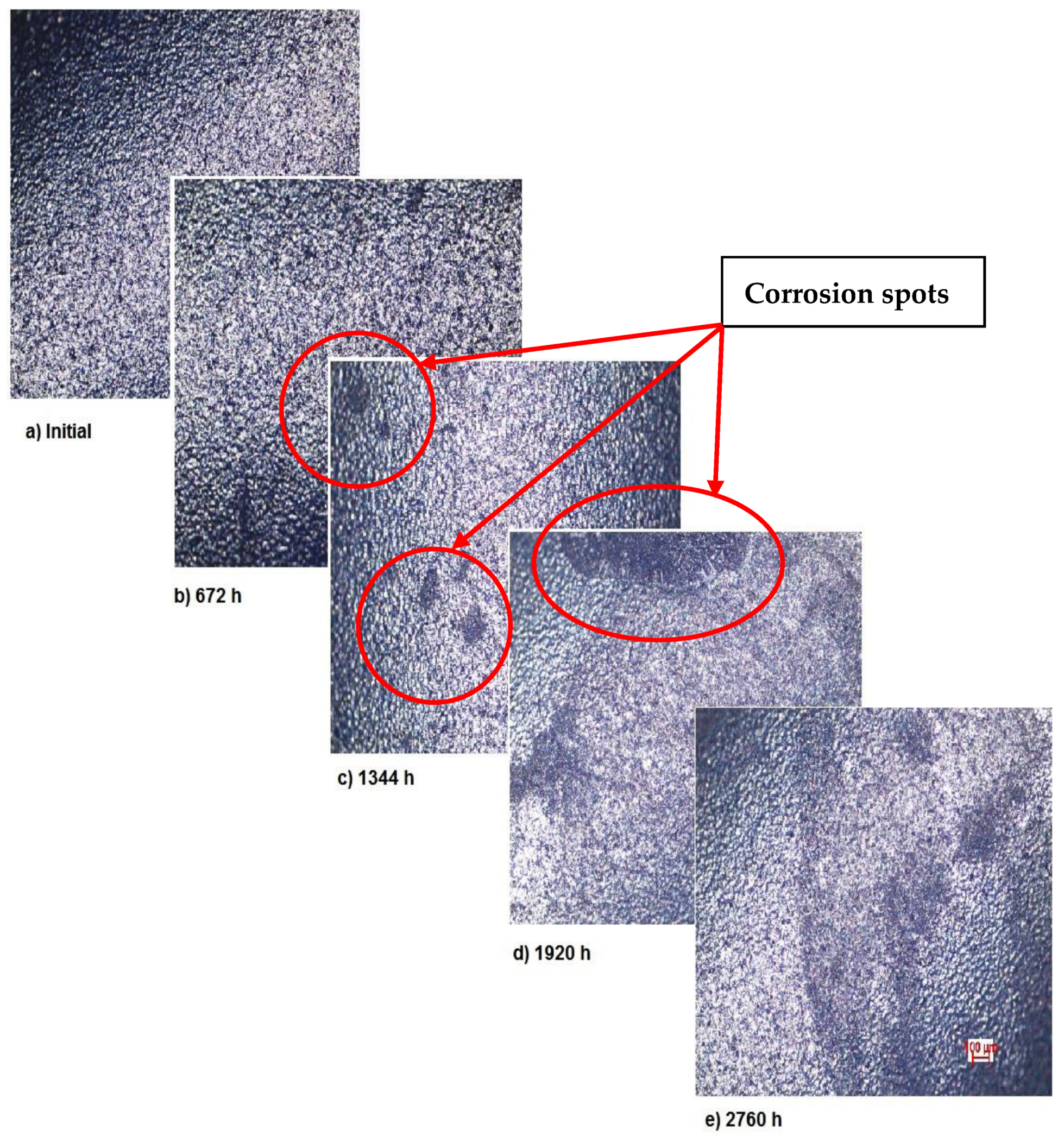
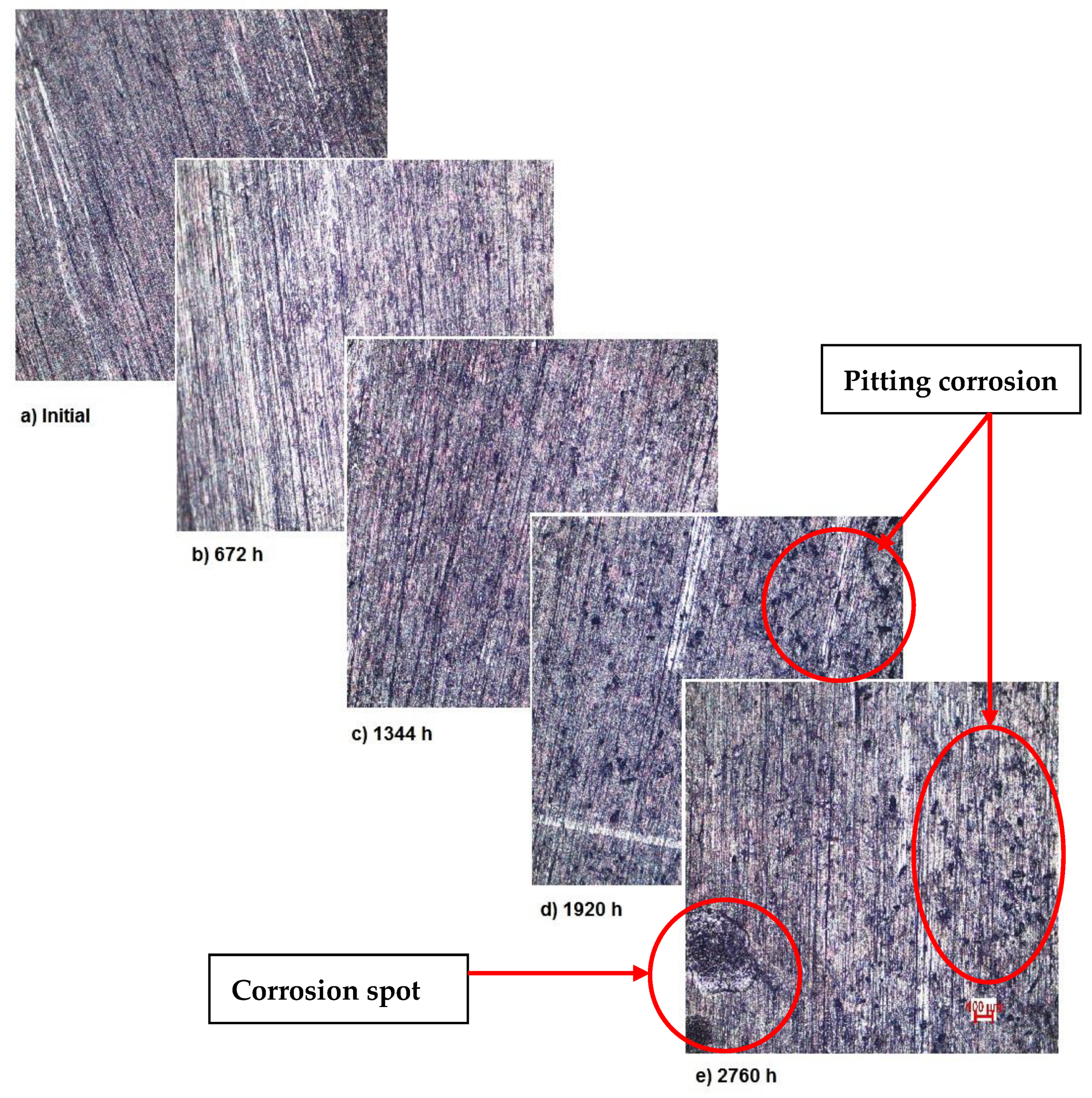
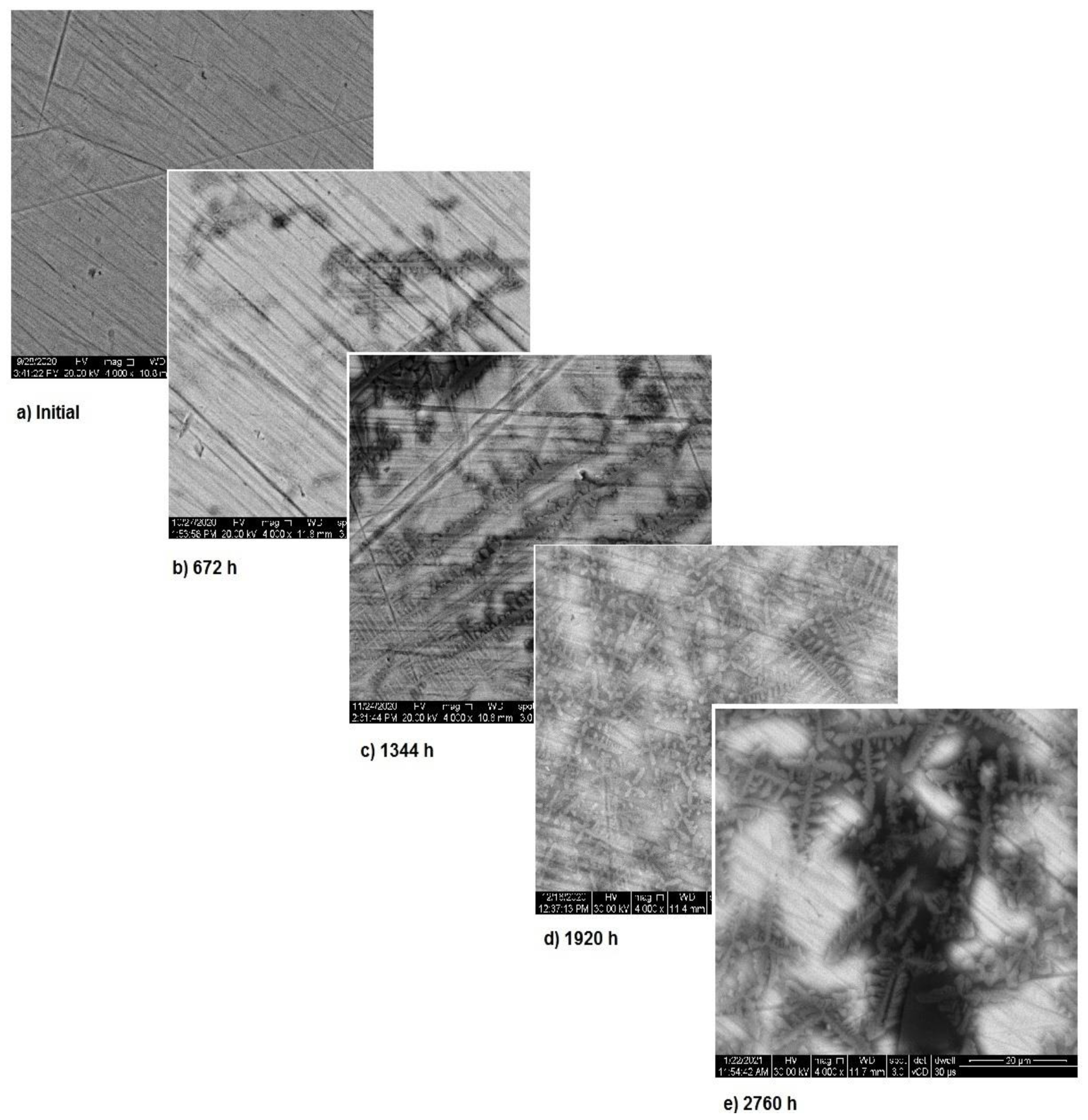

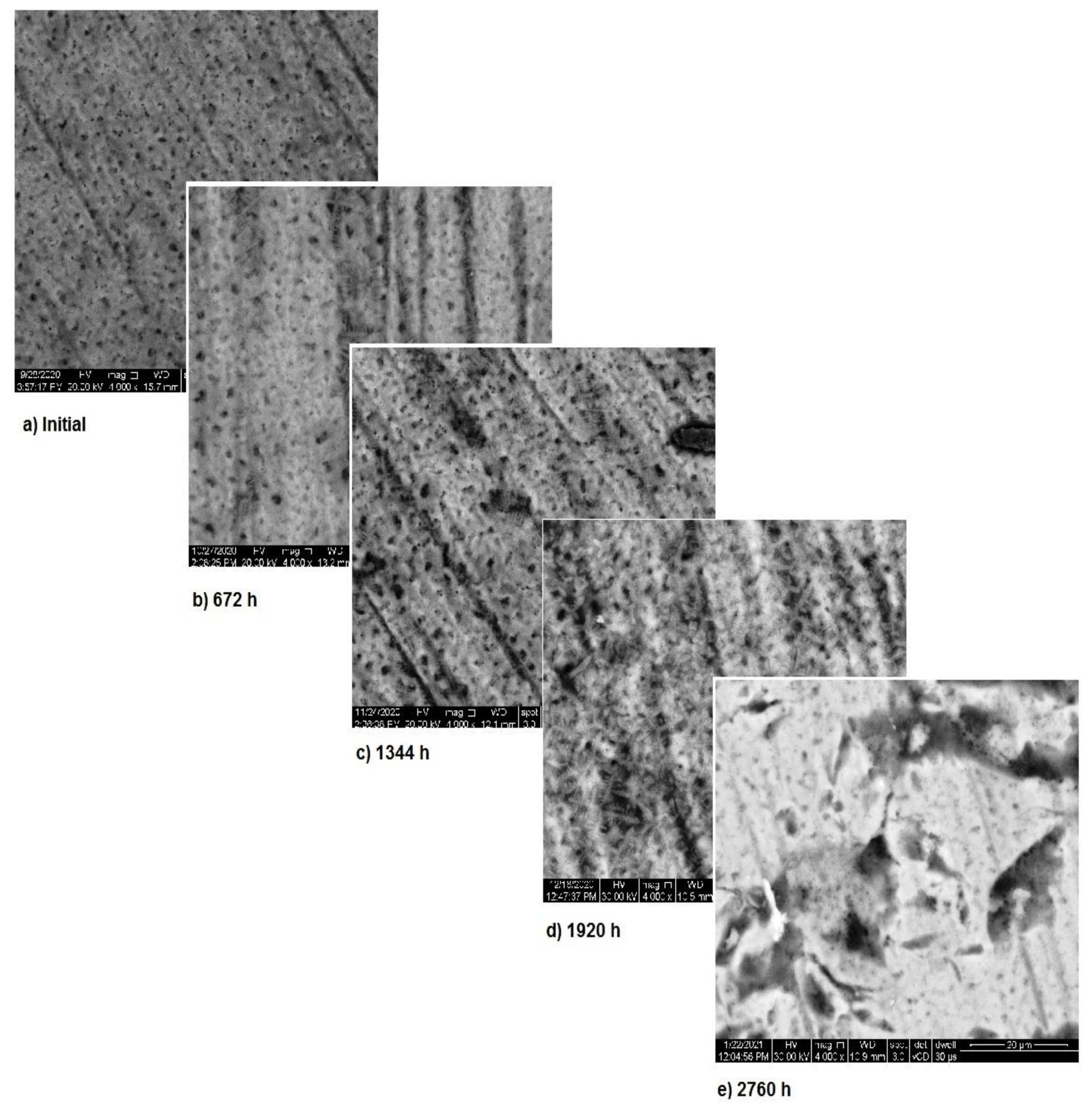

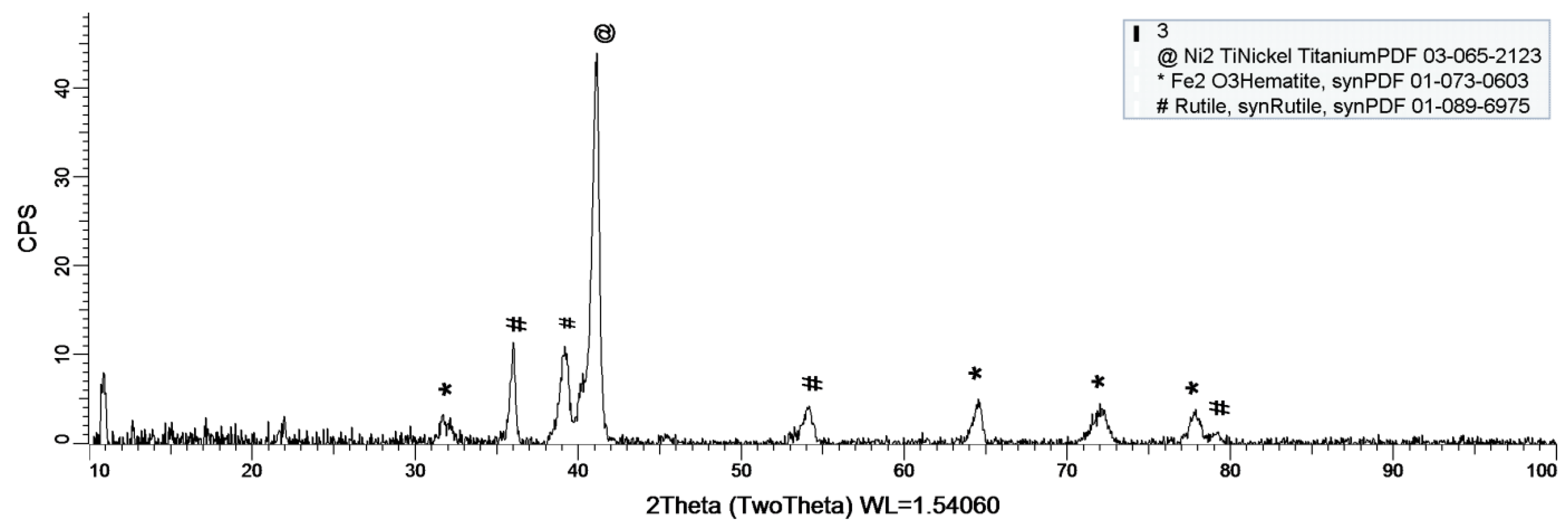

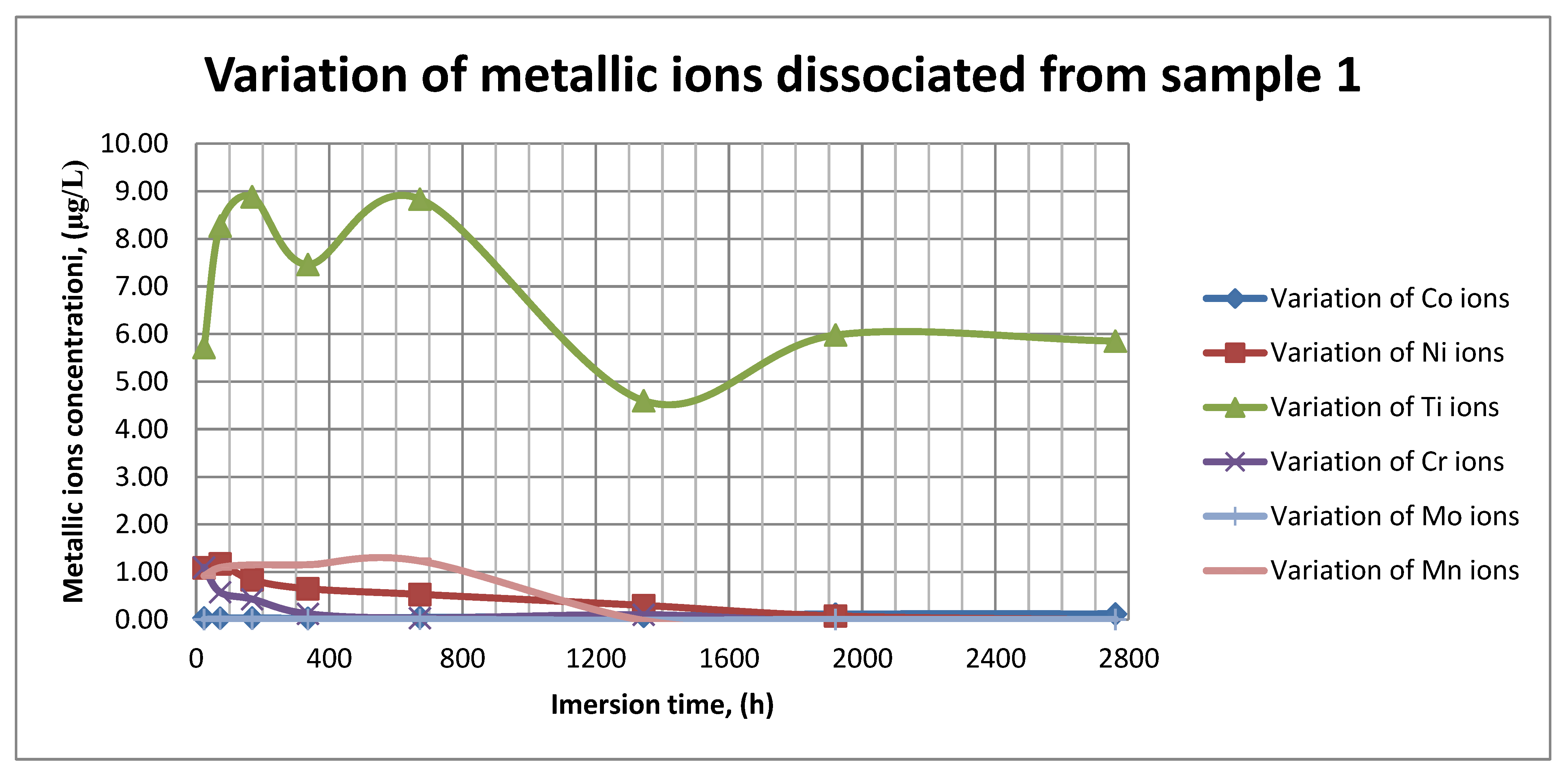

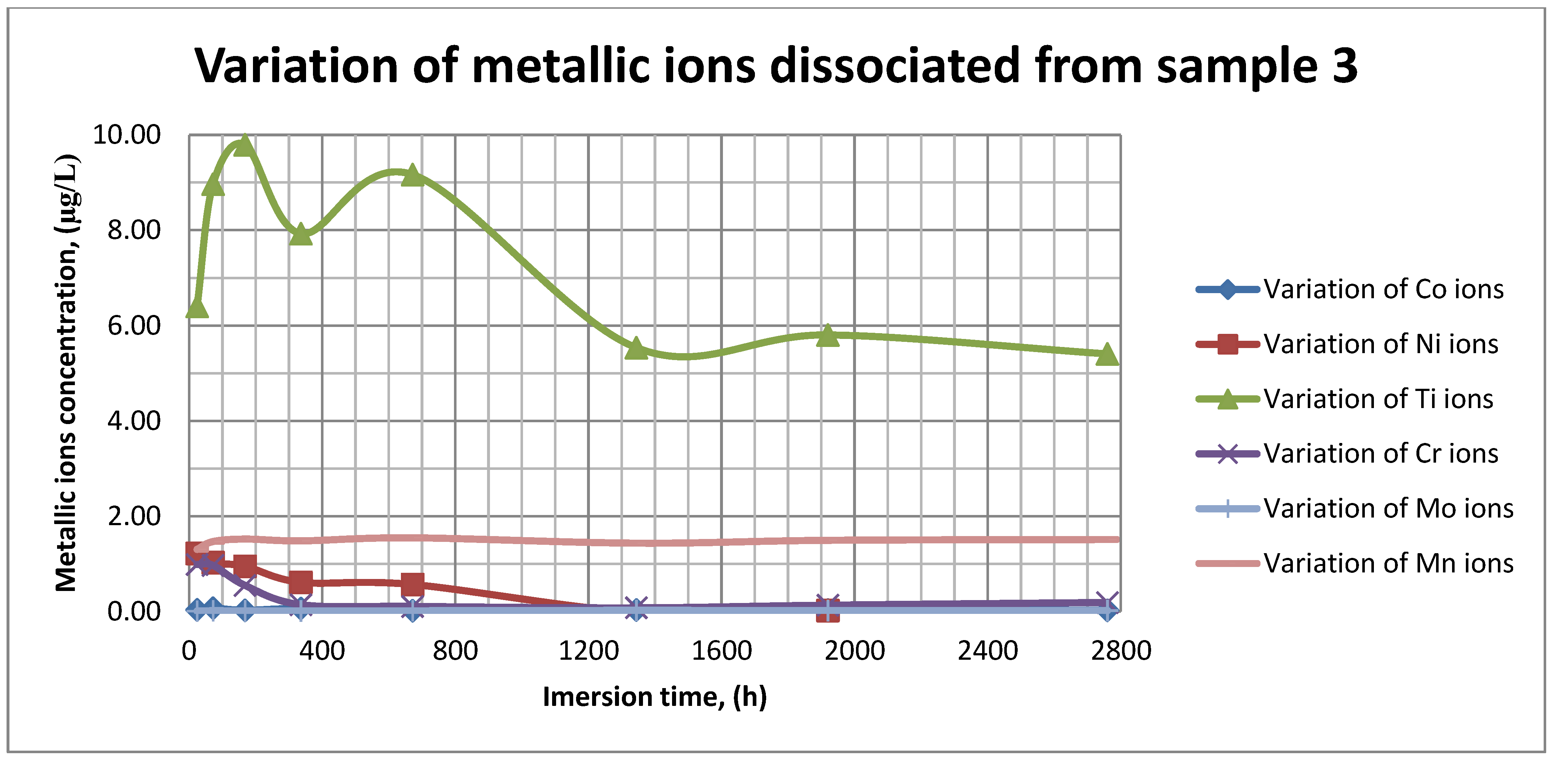

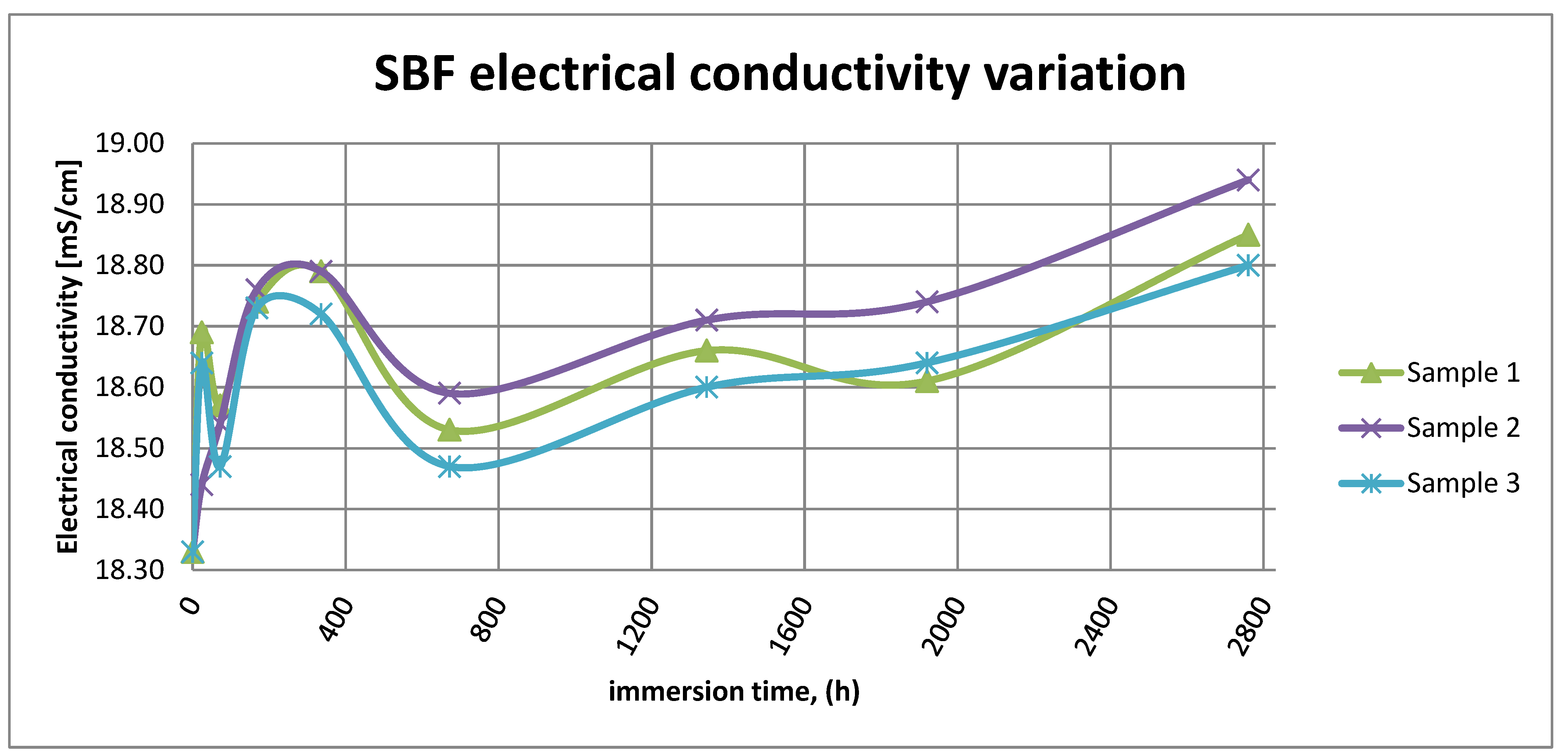
| Metal | Effect |
|---|---|
| Nickel (Ni) | It is the main cause of contact dermatitis. The main biological parameter is the amount of metal released on the skin during direct contact and exposure to human sweat. The limit is 0.5 mg/(cm2 × week) of which an insignificant amount of Ni-sensitive subjects will react. It has toxic effect by creating cellular lesion and large cellular cultures. It is very dangerous for bones and tissues, although less dangerous than Co or V and it has cancer potency. The normal level of Ni in blood is 5 mg/L [21]. |
| Titanium | There is no known biological role for titanium. There is a detectable amount of titanium in the human body and it has been estimated that we take in about 0.8 mg/day, but most passes through us without being adsorbed. It is not a poison metal and the human body can tolerate titanium in large doses [22]. |
| Cobalt (Co) | Its function limits the role of vitamin B12 [16], by diminishing the adsorption of Fe in the blood stream [23]. The normal concentration of Co in human fluids is 1.5 mg/L. |
| Chromium (Cr) | It causes ulceration and central nerve system disorder [23]. The maximal concentration in the blood stream should be 28 mg/L. Its compounds are adsorbed only after oral ingestion. Cr (III) is usually deposited in reticular systems within the cell, while Cr (IV) is capable to penetrate the cellular membrane in both directions [21]. |
| Aluminum (Al) | It provokes epileptic episodes and Alzheimer [23]. The maximal concentration in the blood stream should be 30 mg/L. |
| Vanadium (V) | It is very toxic in its elementary state [23], therefore the maximum concentration should not exceed 0.5 µg/L. |
| Molybdenum (Mo) | It is an essential element used by specific enzymes, thus is easily adsorbed trough the intestines and its normal concentration in the blood stream should be 1–3 ppm. It is very toxic and sometimes lethal in large doses, regular symptoms being diarrhea, coma, heart failure and inhibitor for some essential enzymes. Also, large concentrations of Mo can interfere with Ca and P metabolism [21]. |
| Reagent | Amount for 1 L of SBF |
|---|---|
| Sodium chloride | 8.035 g |
| Sodium bicarbonate | 0.355 g |
| Potassium chloride | 0.225 g |
| Potassium phosphate dibasic trihydrate | 0.231 g |
| Magnesium chloride hexahydrate | 0.311 g |
| 1 M hydrochloric acid | 39 mL |
| Calcium chloride | 0.292 g |
| Sodium sulfate | 0.072 g |
| Tris(hydroxymethyl) amino methane | 6.118 g |
| Sample | Ti (mg/L) | Co (mg/L) | Cr (mg/L) | Mo (mg/L) | Si (mg/L) | Fe (mg/L) | Mn(mg/L) | Ni (mg/L) |
|---|---|---|---|---|---|---|---|---|
| 1 | 12.971 | 11.401 | 4.475 | 0.161 | 0.287 | 2.606 | 0.116 | 2.656 |
| 2 | 10.176 | 1.421 | 0.597 | 0.011 | 0.416 | 7.271 | 0.038 | 74.935 |
| 3 | 14.121 | 0.145 | 0.052 | 0.009 | 0.076 | 12.544 | 0.041 | 36.134 |
| Sample | Surface, (mm2) | Initial Weight, (g) | Initial State | |
|---|---|---|---|---|
| 1 | 1427.93 | 7.1576 |  |  |
| 2 | 1256.75 | 8.0665 | 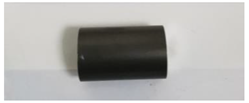 |  |
| 3 | 1101.29 | 3.9136 |  |  |
| Sample | Corrosion Rate (g/(mm2 × Week)) | Corrosion Rate (mm/Year) | Ion Release ((mg/L)/(mm2 × Week)) | |||||
|---|---|---|---|---|---|---|---|---|
| Co | Ni | Ti | Cr | Mo | Mn | |||
| 1 | 4.3 × 10−5 | 0.315 | 1.89 × 10−6 | 76.6 × 10−6 | 1.8 × 10−4 | 0.2 × 10−4 | 0.1 × 10−4 | 0.2% |
| 2 | 4.9 × 10−5 | 0.308 | 14.8 × 10−6 | 3 × 10−6 | 2.6 × 10−4 | 1.7 × 10−4 | 5.2 × 10−4 | 1.3% |
| 3 | 5.6 × 10−5 | 0.259 | 11.2 × 10−6 | 6.7 × 10−6 | 2.3 × 10−4 | 34.2 × 10−4 | 7.6 × 10−4 | 1.6% |
Publisher’s Note: MDPI stays neutral with regard to jurisdictional claims in published maps and institutional affiliations. |
© 2021 by the authors. Licensee MDPI, Basel, Switzerland. This article is an open access article distributed under the terms and conditions of the Creative Commons Attribution (CC BY) license (https://creativecommons.org/licenses/by/4.0/).
Share and Cite
Mirea, R.; Cucuruz, A.T.; Ceatra, L.C.; Badea, T.; Biris, I.; Popescu, E.; Paraschiv, A.; Ene, R.; Sbarcea, G.; Cretu, M. In-Depth Comparative Assessment of Different Metallic Biomaterials in Simulated Body Fluid. Materials 2021, 14, 2774. https://doi.org/10.3390/ma14112774
Mirea R, Cucuruz AT, Ceatra LC, Badea T, Biris I, Popescu E, Paraschiv A, Ene R, Sbarcea G, Cretu M. In-Depth Comparative Assessment of Different Metallic Biomaterials in Simulated Body Fluid. Materials. 2021; 14(11):2774. https://doi.org/10.3390/ma14112774
Chicago/Turabian StyleMirea, Radu, Andrei Tiberiu Cucuruz, Laurentiu Constantin Ceatra, Teodor Badea, Iuliana Biris, Elisa Popescu, Alexandru Paraschiv, Razvan Ene, Gabriela Sbarcea, and Mihaiella Cretu. 2021. "In-Depth Comparative Assessment of Different Metallic Biomaterials in Simulated Body Fluid" Materials 14, no. 11: 2774. https://doi.org/10.3390/ma14112774
APA StyleMirea, R., Cucuruz, A. T., Ceatra, L. C., Badea, T., Biris, I., Popescu, E., Paraschiv, A., Ene, R., Sbarcea, G., & Cretu, M. (2021). In-Depth Comparative Assessment of Different Metallic Biomaterials in Simulated Body Fluid. Materials, 14(11), 2774. https://doi.org/10.3390/ma14112774






